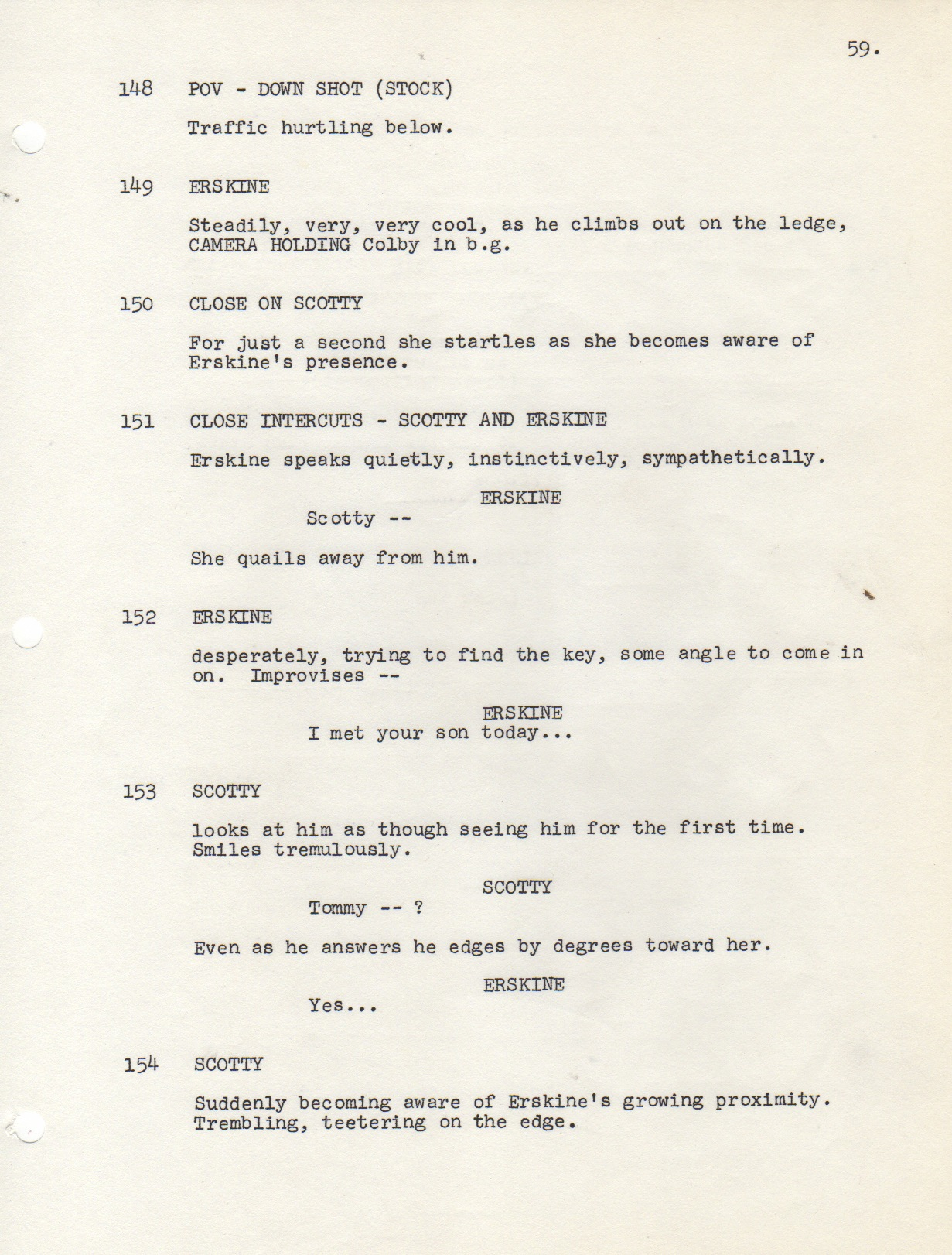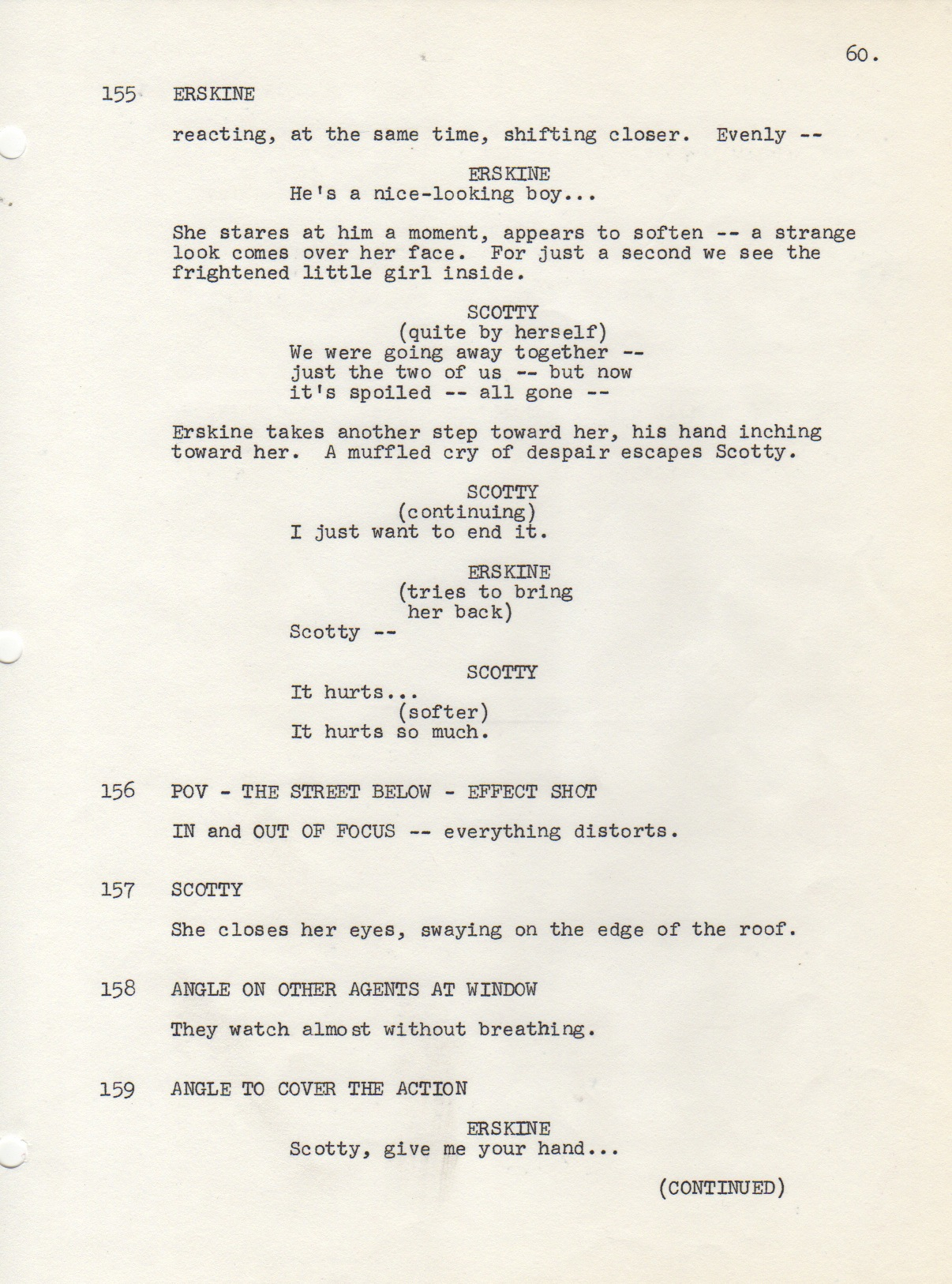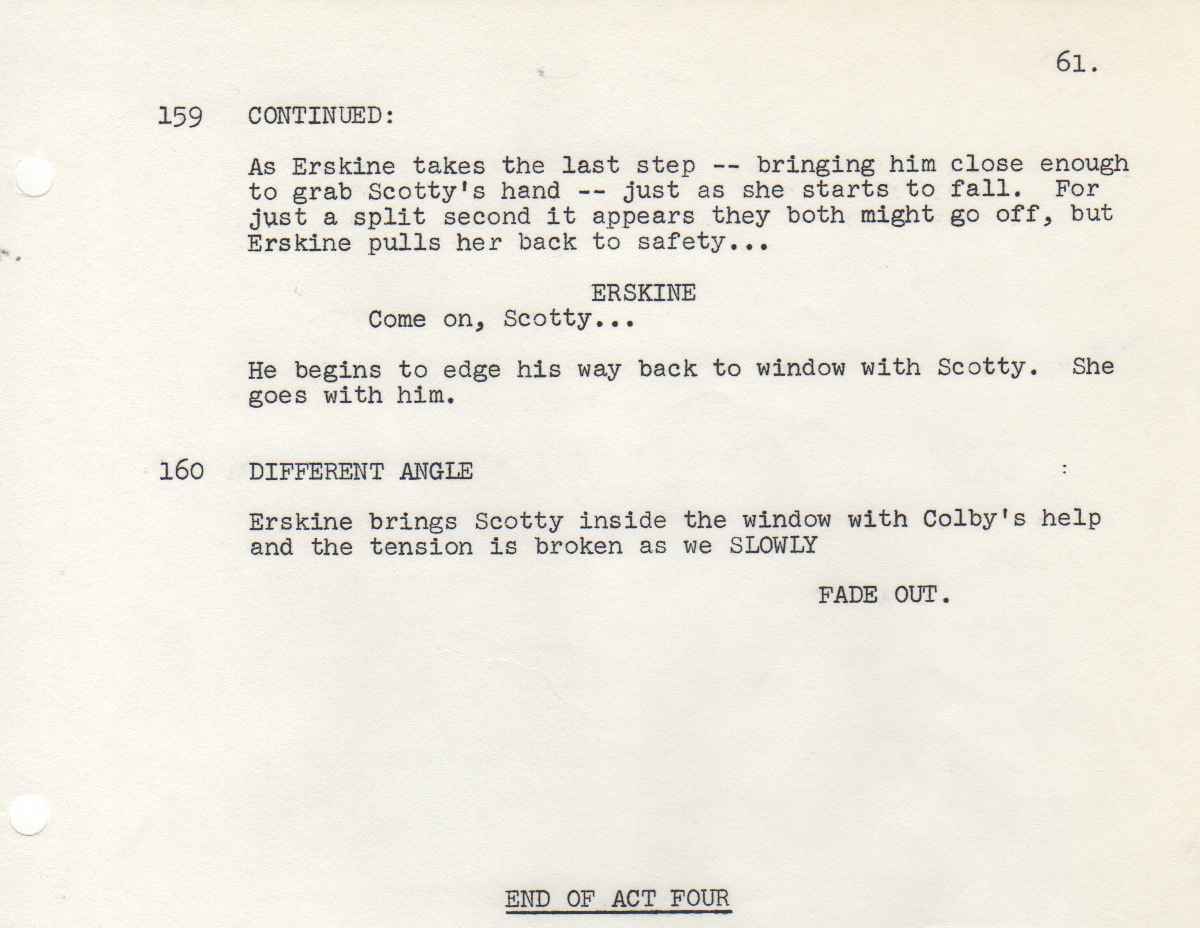FILMED January 1972
Great article, Mr. Senensky, real “who’s who” of superb 60s and 70s television actors.
The above was part of a COMMENT left on my last post — ARRANGEMENT WITH TERROR. The writer was referring to the actors in the film — Diana Hyland and Roger Perry. I think the current post will shed light on two more superb 60s and 70s performers. Here’s the female of the species.
We seemed to be on a roll. Yet another female as the charged FBI criminal of the week! I first met then twenty-two year old Penny Fuller, that pistol-packing mama, in New York in 1963, when she was brought in to audition for the role of Carroll O’Connor’s seventeen-year old daughter in AGE OF CONSENT on EAST SIDE WEST SIDE. She got the part. In the ensuing years Penny made some appearances in movies, some in television, but her main focus was theatre and Broadway. She replaced the stars in the original productions of BAREFOOT IN THE PARK and CABARET and in 1970 played Eve in APPLAUSE, the musical version of the classic film, ALL ABOUT EVE, for which she was Tony-nominated.
As per usual QM productions, THE DEADLY SPECIES had a seven-day schedule – four days local locations and three days on the lot. Most of one of those days on the lot would not be on a soundstage. The previous picnic scene, our first sequence on day four, was in the “jungle” on the backlot.
I met Milt Kamen, the current sleazy detective, in 1964 when he auditioned for the role Larry Storch played in THE JACK IS HIGH on SUSPENSE THEATRE. Milt had a very interesting and unusual career. He was a successful French Horn player, occupying a chair at the Metropolitan Opera. He began his comedy career as a stand-in for Sid Caesar on Caesar’s Hour and later performed on that show. He moved on to stand-up comedy gigs and then into television and film. Once I started casting Milt, I used him a lot. The interesting thing was he could play derelict people like the current one, but he was also great in comedy roles. I cast him as the driver-for-hire in GUESS WHO’S COMING TO DRIVE on THE PARTRIDGE FAMILY.
The sandblasting site was one of the buildings at the rear of the Warner Brothers lot. It was our second sequence on the fourth day of filming. To illustrate how a film company moves about, our first sequence that day was the picnic scene on the backlot. The final sequence for the day was the hotel room on Stage 11, where Scotty met the detective.
Our first day of filming (we started on a Monday) was at a racetrack in Saugus, a small community about twenty miles north of the Warner Brothers studio in Burbank. Since the four-page sequence at the racetrack was not a full day’s work, we found sites for two other sequences in the area that could be filmed that day. Incidentally don’t go checking a map today looking for Saugus. It was one of four communities that merged in 1987 to create the city of Santa Clarita.
I met actor’s agent Alex Brewis in the early sixties. Alex was one of the small independent agents who prevailed in those days. Whenever I was prepping a show, Alex would drop by my office to make his suggestions and submissions directly to me. I remember from early on he was touting a very young actor in whom he had a lot of faith. In 1966 I was finally able to find a role for that aspiring thespian. He played the young radical involved in the planned assassination of Dean Jagger’s character in THE ASSASSIN on THE FBI, the first of his four guest starring roles on THE FBI. The young actor was Tom Skerritt, By 1972 Tom was a well-established presence on television, so that for the current production, his fourth and final appearance on the series, he received top billing. Tom has had a long and lucrative career. In the 70’s in addition to his appearances on television he had major roles in two classic films – THE TURNING POINT and ALIEN. In the 90’s he headlined the four-season run on CBS of PICKET FENCES. And you know what – he’s still working today!
Our sixth day of filming was spent at two locations near the studio in Burbank. We opened shooting the interior and exterior of the posh restaurant that opened the show. Incidentally the manager’s office and corridor for that sequence was not filmed that day. It was filmed the next day on a Richard Haman-designed set at the studio. That worked out fine for Warren Parker, the excellent actor portraying the restaurant manager. Warren was a friend. I played bridge with him and his wife, Mary Patton (a fine actress) at their apartment just down the street from the Directors Guild of America offices on Sunset Boulevard. Because of filming part of the sequence on location and the rest at the studio, Warren received two days pay for his five words: “What happened?” and “Call a doctor!”
The other location that day was the gun shop. You may recognize the actor playing the gun shop salesman. It was the first and only time I worked with John Hillerman, although as I remember, I met him across a bridge table. John hailed from Texas, which may surprise fans of MAGNUM, P.I., where he reigned for eight seasons acting with an acquired British accent. John once received a fan letter from a British Lord that read, “You are a credit to the Empire.”
Eddie Quillan, Bill’s partner, the mechanic, was an old-time Hollywood veteran. Born into a vaudeville performing family, Eddie, at the age of seven, began appearing on-stage with his parents, his sister and three brothers. When he was nineteen, he made his debut in silent films, working in two-reel shorts for the famed Mack Sennett. He made the transition to sound films, but with his rubbery face and short stature, he wasn’t leading man material. He continued to work and appeared, although in small roles, in some of the greatest screen classics: MUTINY ON THE BOUNTY, YOUNG MR. LINCOLN, THE GRAPES OF WRATH, BRIGADOON. The coming of television in the late 50’s provided him an avenue for continued if not constant employment for the balance of his life..
For our third day we went to the Ontario Motor Speedway in Ontario, a city forty miles east of Los Angeles. The racing car sequences you viewed were drawn from stock footage. My chore was to film the four-page robbery sequence. As I remember, we ended up having a short day. Even though the four pages were spread over several areas of the racetrack, we managed to complete our photography by 3:30 or 4:00 in the afternoon. The next day, as the screening of the dailies ended after about twenty minutes, producer Philip Saltzman’s voice in the darkened theatre said, “Is that all there is?” Arthur Fellows, the executive in charge of production, responded, “It’s all there. That’s all you need.”
The young actor playing Tommy was ten-year old Leif Garrett. His first acting job was three years earlier. Three years later I would work with Leif again when I directed two episodes of THREE FOR THE ROAD, a series in which he was one of the stars. Leif is another example that, although attractive and extremely talented, child actors are not assured of having careers like former child actors Elizabeth Taylor, Mickey Rooney, Judy Garland, Roddy McDowall and more recently Jody Foster and Helen Hunt.
Efrem Zimbalist was a charming and accommodating performer. I never had any problem with Zimmy objecting to any of my staging or any objections he might have to the script. I’m positive that producers Charles Larson and Philip Saltzman could make the same statement. I was surprised when Zimmy came to me on the first day of filming and asked me what I thought of the final three-page scene in Act IV. I told him I had severe reservations about the scene as to content and the difficulty I foresaw in filming it. Here is the script for that sequence:




Zimmy told me he too was unhappy with the scene, and he was going to meet with producer Phil Saltzman. I don’t know what went on during that meeting. I do know that four days later I received three yellow pages of revised script, and I was relieved and pleased. Phil had rewritten the scene, and his was the version we filmed on our seventh and final day.
That scene in the hotel room was filmed on the soundstage. For the scenes in the lobby the location crew took me to an old historic building on Franklin Avenue in Hollywood. I was impressed. The building had an aura of old world Hollywood elegance. With the new ending that Phil had written for Scotty’s scene in the hotel room, I decided I would use Blanche’s final exit in A STREETCAR NAMED DESIRE as the template for Scotty’s final exit.



Although I found many of Quinn Martin’s shows to be a little rigid and formulaic (especially The FBI), I admired the amount of substantial and quality roles the shows offered for many of the great actresses on TV. I am a fan of Fuller (and I believe she played a villain on another FBI episode). This is another wonderful, very detailed account. Thanks for the memories Mr. Senensky.
Really enjoyed this episode Mr Senensky – wonderful performance by Penny Fuller. The commentary you provide on the actors is also fascinating. Up until a year or so ago, I didn’t know Milt Kamen was a dramatic actor – just knew him from his numerous standup performances. Then I saw a first season episode of Route 66 in which he had a dramatic role – and was quite good. And had no idea he was so talented a musician. Was also nice to see James Hampton in a dramatic role – after seeing him in mainly comedic ones.
Certainly agree that the final scene as filmed was much, much better than the original scripted version. And the opening shot tracking the cocktail as it was served was a great teaser – really captured my attention…….
Dear Mr. Senensky — I know your age is advance and I hope you are still well and healthy. I was fascinated to read your comments about ‘Grandma Comes Home’ because even though the ‘green bean’ scene has always been (in my mind) one of the high points in television history, I’ve never been able to read or see anything written or said about it. What an acting triumph by Ellen Corby and Michael Learned. Thank you for everything you did to impress that wonderful scene upon my consciousness and for your contribution to television. I don’t expect a reply but would be thrilled to receive one. Many blessings to you! Jeff Lemon, Temple Texas
How can I resist replying to such a fine testimonial. I want to make one small alteration to your note. I consider my age mature, not advanced.
My respect for Zimmy went up a couple of notches after reading your write-up. After seven years of a successful show, he still cared about its quality. Some stars would have stopped reading the scripts long before seven years. Furthermore, the 11th video is all Penny, while Zimmy was there to react, not be the hero. I’ll bet most stars would not park their egos so easily.
As for the original scene that was ditched…OMG, how many times has the “get on the ledge and pull the jumper back inside the window” scene been done before? About 400?!
Regarding Eddie Quillan, I flagged him immediately as someone from ‘The Wild Wild West’, but I just couldn’t remember the episode. Shame on me, I had to look him up afterward (he did two eps.).
I never watched ‘Magnum P.I.’, but I remember John Hillerman playing a high-class know-it-all who always fingered the wrong murder suspect in ‘Ellery Queen’. That was a fun series…too bad you never did it.